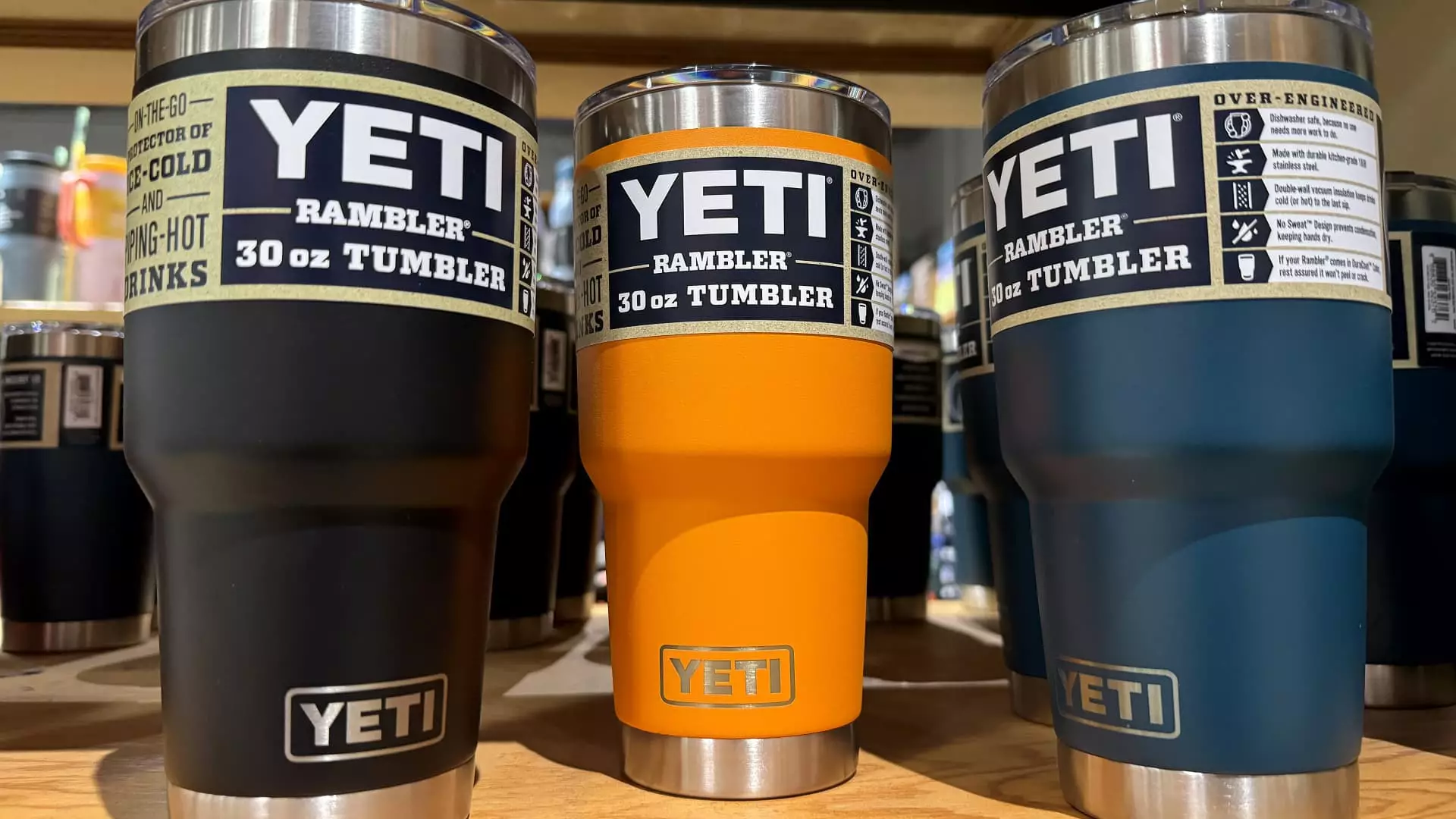Yeti Holdings, widely recognized for its premium outdoor products, is currently navigating through tumultuous waters. With a market capitalization hovering around $2.5 billion and trading at approximately $30.15 per share, the company has witnessed a significant decline in its stock performance and growth potential. Once a darling of the market, Yeti’s shares peaked at $108 in November 2021, driven by impressive annual growth rates. However, recent figures indicate a mere 3.98% growth rate in 2023, precipitating concerns among investors about the company’s ongoing viability and future prospects.
Two primary driving forces are evident in this stagnation: complacency in management strategies and a lack of strategic communication with investors. While Yeti is synonymous with high-quality insulated coolers and drinkware, its ownership structure and current board dynamics hint at troubling undercurrents. With the recent intervention from Engaged Capital, it is clear that the need for change is more urgent than ever.
Strategic Expansion: Tapping into New Markets and Categories
The first formidable opportunity for Yeti lies in geographical and product category expansion. While successful in markets like Canada and Australia, Yeti has yet to capitalize fully on the European and Asian markets. Given the rise of outdoor activities and a corresponding demand for premium outdoor gear in these regions, this represents an untapped reservoir for growth. Smart, aggressive marketing campaigns tailored to local preferences could transform Yeti from a niche brand to a household name internationally.
Furthermore, the company’s commitment to innovation, grounded in superior insulation and moisture protection, perfectly positions it to diversify its offerings. Expansion into new segments—such as luggage, camping gear, and broader outdoor apparel—could unlock significant growth avenues. Yeti’s established brand loyalty, built on the promise of durability and performance, would likely facilitate smooth entry into these new categories. This diversification is not merely a suggestion; it’s a necessity in an increasingly competitive market where consumer preferences are shifting swiftly.
Communication: The Lifeline for Reviving Investor Confidence
In the realm of investor relations, Yeti has been painfully reticent. The absence of an investor day or clear mid-term targets stands in stark contrast to successful brands like SharkNinja, a company that has adeptly harnessed the power of communication to drive growth. By publicly sharing product roadmaps and engaging with stakeholders, brands like SharkNinja have grown their adjusted net sales at an impressive CAGR of 23.6%.
For Yeti, implementing a robust communication strategy is imperative. It must not only share its vision of global expansion and product diversification but also engage with existing and potential investors consistently. The way forward may entail regular updates via investor presentations and participation in industry conferences to reinvigorate investor interest and confidence.
Capital Allocation: Harnessing Net Cash for Shareholder Value
The company’s financial position also presents a significant opportunity for revitalization. With approximately $280 million in net cash and nearly $300 million in EBITDA, Yeti is in a far better situation than many competitors. However, trading at a mere eight times EBITDA, this creates a compelling scenario for capital allocation tactics that could boost shareholder value.
Buying back stocks, particularly when they are perceived as undervalued, could create substantial returns for investors in the long run. If Yeti were to allocate funds judiciously, it could feasibly repurchase up to 50% of its current market capitalization over a five-year horizon. This course of action not only signals to the market that management believes in the company’s future but also creates an incentive for investors to remain engaged with Yeti as it transitions toward a growth-oriented strategy.
Yeti Holdings stands at a critical juncture. The combination of strategic growth opportunities, a pressing need for improved investor communication, and prudent capital allocation creates window after window of possibility. However, the company must act swiftly and decisively. The stakes are high, and the capacity for revitalization is ripe for the taking. It’s not just about surviving in a competitive marketplace; it’s about reclaiming the narrative that has elevated Yeti to its former glory. Only then can the company hope to see its stock price recover and continue its long-standing reputation in the outdoor products industry.

